Match the classes of durgs given in Column - I with their action givne in Column - II.

(A→5),(B→6),(C→4),(D→7),(E→2),(F→1),(G→3)
Topper's Solved these Questions
- BOOK - KUMAR PRAKASHANCHAPTER - CHEMISTRY IN EVERYDAY LIFEEXERCISE - SECTION - D (NCERT EXEMPLAR SOLUTION)(ASSERTION AND REASON)14videos
CHEMISTRY IN EVERYDAY LIFE
- BOOK - KUMAR PRAKASHANCHAPTER - CHEMISTRY IN EVERYDAY LIFEEXERCISE - SECTION - D (NCERT EXEMPLAR SOLUTION)(LONG ANSWER TYPE QUESTIONS)1videos
CHEMISTRY IN EVERYDAY LIFE
- BOOK - KUMAR PRAKASHANCHAPTER - CHEMISTRY IN EVERYDAY LIFEEXERCISE - SECTION - D (NCERT EXEMPLAR SOLUTION)(SHORT ANSWER TYPE QUESTIONS)47videos
CHEMISTRY IN EVERYDAY LIFE
- BOOK - KUMAR PRAKASHANCHAPTER - CHEMICAL KINETICSEXERCISE - Section-E(MCQs asked in GUJCET/Board Exams )53videos
CHEMICAL KINETICS
- BOOK - KUMAR PRAKASHANCHAPTER - ELECTROCHEMISTRYEXERCISE - SECTION-E MCQ.s Asked in GUJCET/Board Exam55videos
ELECTROCHEMISTRY
Similar Questions
Match the classes of drugs given in Column I with their action given in Column II.
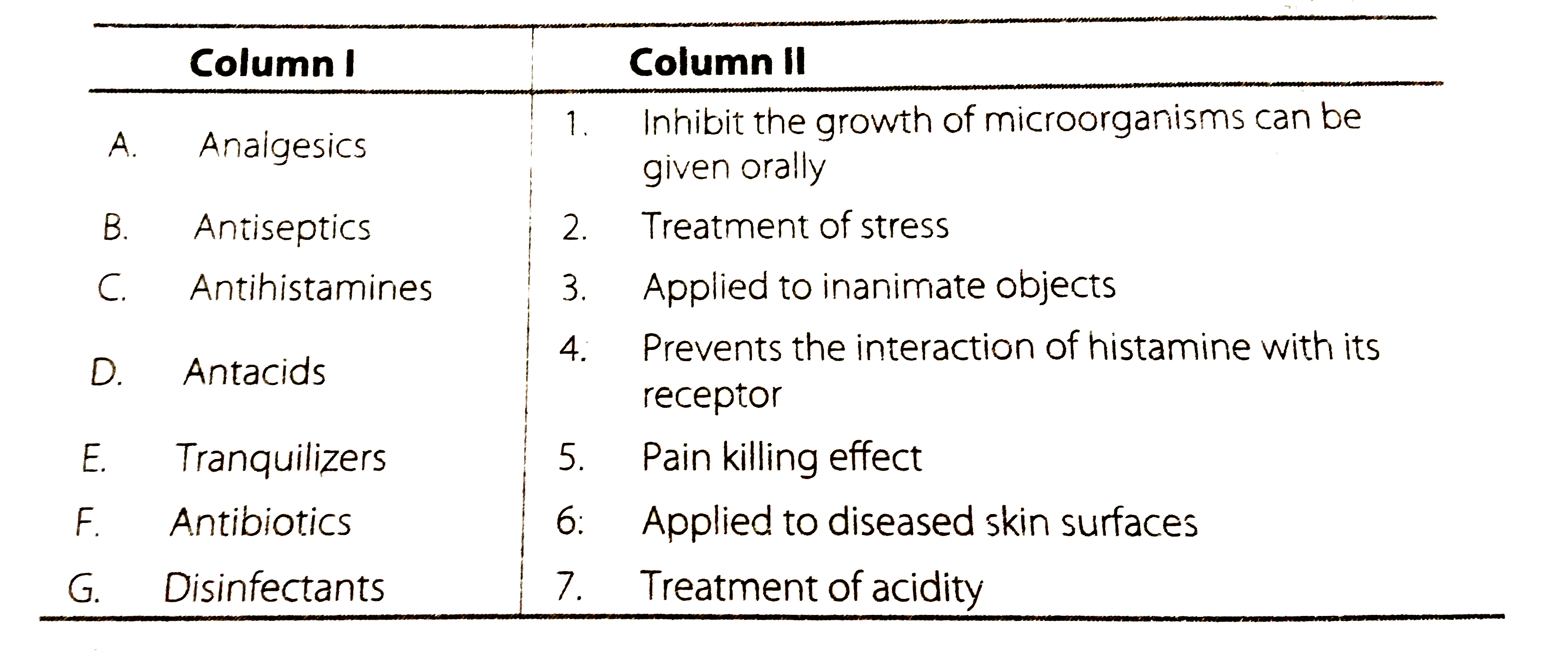 View Solution
View SolutionMatch the classes of drugs given in Column I with their action given in Column II.
 View Solution
View SolutionMatch the class of compounds given in Column I with their functions given in Column II.
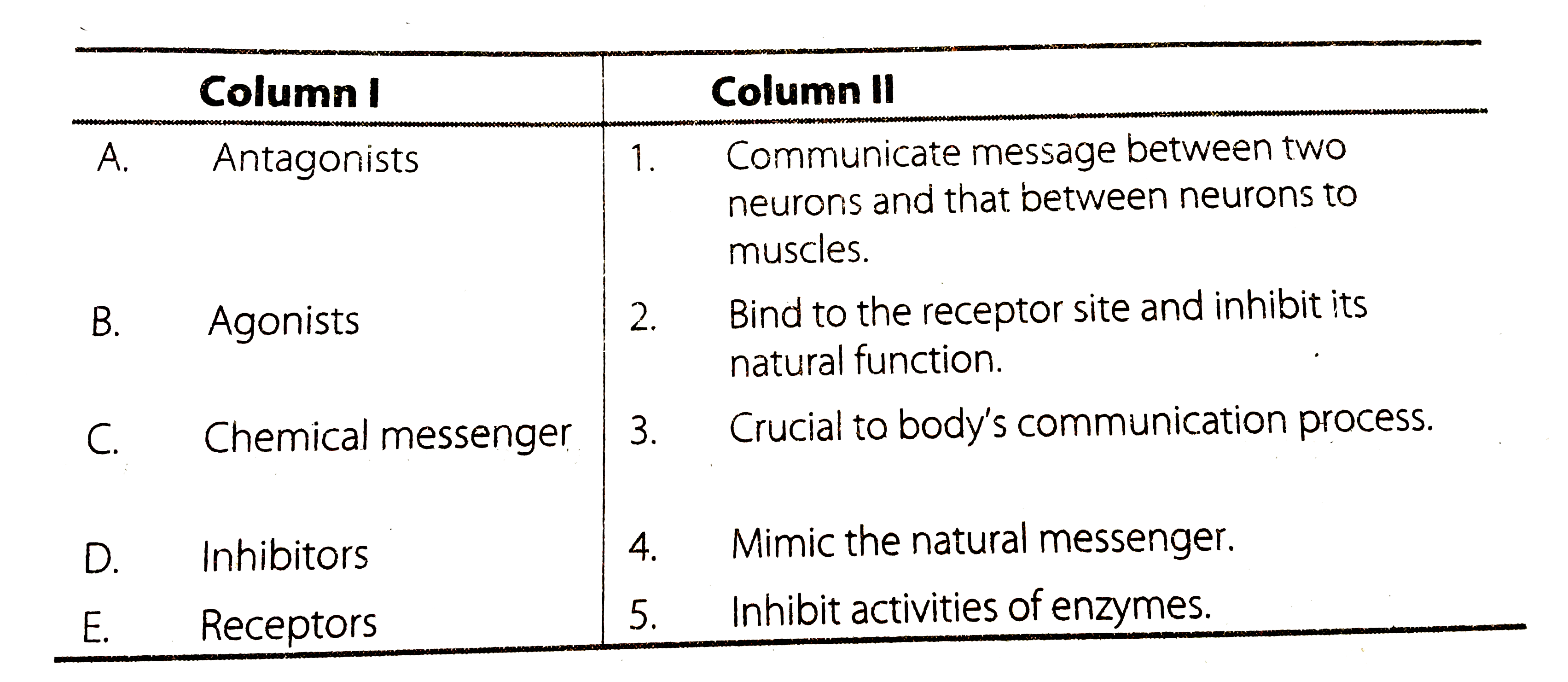 View Solution
View SolutionMatch the class of compounds given in Column I with their functions given in Column II.
 View Solution
View SolutionMatch the class of compounds given in Column I with their fucntions given in Column II .
 View Solution
View SolutionMatch the class of compounds given in Column I with their functions given in Column II.
 View Solution
View SolutionMatch the organisms given in Column I with their mode of nutrition given in Column II.
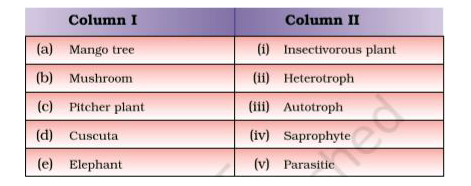 View Solution
View SolutionMatch the polymers given in Column I with their repeating units given in Column II.
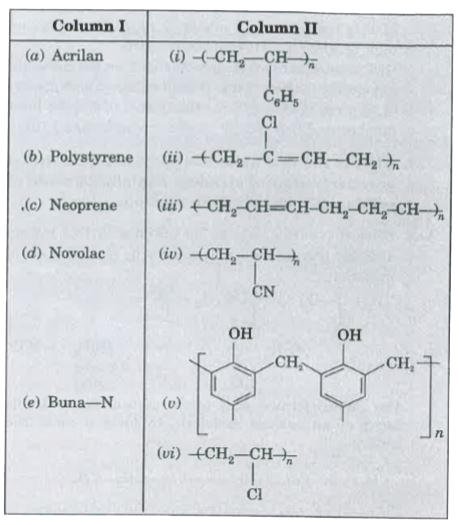 View Solution
View SolutionMatch the organisms in Column I with their action in Column II.
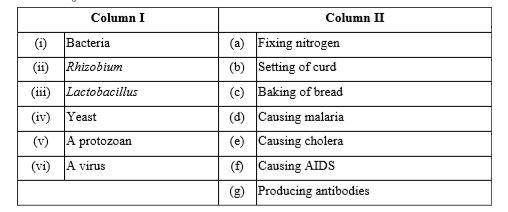 View Solution
View SolutionMatch the statements given in Column I with the oxidation states given in Column II.
 View Solution
View Solution

